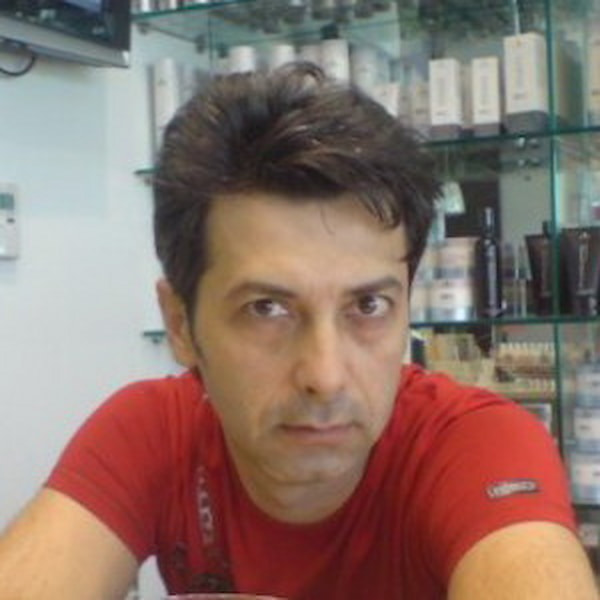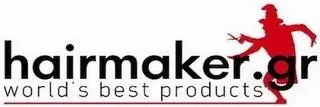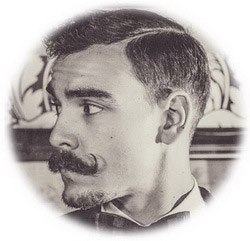- HairMaker.Gr
- Traditional Shaving
- 2 likes
- 2999 views
- 0 comments
- grooming, history of grooming
The Evolution of Men's Grooming

Article Navigation
The Evolution of Men's Grooming — Introduction & Context
The evolution of men's grooming is a living history that never stops. Each era adds new habits, techniques and products; sometimes out of necessity (climate, hygiene, social norms) and sometimes from aesthetic or technological progress. Men's grooming isn't just about shaving; it includes skincare, hair care, fragrance, body hygiene and style. Today we talk about "self-care" and "image health," but the roots are found in ancient civilizations that treated cleanliness and appearance as indicators of prosperity and prestige.
The purpose of this article is to present a timeline that shows how men's grooming adapted to the conditions of each era: from oils and baths of antiquity, to rapid mass commercialization of products, to modern specialized formulations. We'll see how civilizations exchanged ideas, how wars and industrial changes influenced men's habits, and how media images (like Hollywood) created grooming standards that influenced millions.
It's also important to recognize that grooming has been functional: protection from sun, dust, infections, cold or dry air. Rituals like bathing, fragrancing or oil massage had practical value too. In the end, grooming isn't superficial; it's a way of caring for oneself, improving skin health and boosting confidence.
In the following sections we follow a historical journey in six stops: Antiquity, Middle Ages, early modernity (Elizabethan–Victorian), 20th century with the rise of spectacle, modern era and, finally, conclusions with trends shaping tomorrow. This way, we get a clear picture of how we went from aromatic oils to advanced formulations and personalized grooming routines.
Before Christ — Egypt, China & Rome: Roots and Rituals
In Ancient Egypt, men's grooming was deeply connected to climate and hygiene. The dry desert heat required frequent washing, use of oils for skin hydration and aromatic mixtures for freshness. Hair removal, cutting or head shaving helped with cooling and skin care. Even eye aesthetics with "kohl"-type preparations had a practical role, as they reduced sun glare and protected the skin around the eyes.
In Ancient China, herbal medicine shaped concepts of care. Infusions, herbs and tonic lotions were used for skin and hair balance. Grooming was integrated into a broader life philosophy centered on harmony and health maintenance.
The Roman tradition elevated public and private baths to a social institution. Men combined cleanliness, steam and oil massage in rituals that also had a social dimension: exchange of ideas, agreements, culture. The use of strigil (scraper) and scented oils was a standard routine. In any case, grooming wasn't luxury; it was an element of daily life, health and prestige.
From Egypt to Rome, we see three common threads: cleanliness as protection, oils for hydration/care and rituals that enhanced social status. These foundations would influence the concept of men's grooming for centuries.
Hair GelHair Gel
Strong hold and clean finish for spikes, wet look or precise lines that last all day.
Hair BrilliantineHair Brilliantine
Classic shine with subtle hold for retro, sleek or elegant hairstyles without frizz.
Hair PomadesHair Pomades
Flexible styling from matte to high-shine with control and reshaping throughout the day.
Middle Ages — From Bath Decline to Habit Preservation
After the fall of the Roman Empire, many public baths were abandoned and the pace of grooming evolution slowed. The Middle Ages is often considered a "dark age" for hygiene, but reality is more complex: in monastic environments and commercial centers, practices of cleanliness, soap production and use of aromatic oils were maintained on a smaller scale.
The spread of mirrors (with silver coating later) and development of pharmacies as distribution points for medical-pharmaceutical and cosmetic preparations contributed to gradual product standardization. In the West, grooming was connected to social class and access to raw materials, while in other areas (e.g. commercial cities) vibrant traditions of baths and steam baths were maintained.
The Medieval man cared for hair, beard and skin with simple means: oils, aromatic herbs, handmade soaps and cutting tools. Grooming served practical purposes (hygiene, workplace cleanliness) but also social ones (church and public events). Although systematic, daily routine was rarer compared to antiquity, the foundations remained: need for cleanliness, hair growth control and fragrance for freshness.
Overall, the Middle Ages didn't "erase" grooming. It simply transferred it from large public spaces to more private or community environments, preparing the ground for the renaissance of daily hygiene in subsequent centuries.
From Elizabeth's Era to Victorian — Mass Production & Accessibility
Early modernity brought major changes to men's grooming. With the development of crafts and industry, basic hygiene products became more available. Body soap entered more households, while pharmacies and commercial stores began offering treatments for common skin issues (dryness, irritation, spots).
During the Victorian era, aesthetic discipline coexisted with technological progress. Men's care products became more standardized, with usage instructions and specific result promises. The rise of commercial brands shaped new consumer expectations and gradually defined what "good appearance" meant for a man: clean face, neat hair, subtle fragrance.
During periods of major social upheavals, hygiene supply provisions to armies or large worker groups strengthened production and broadened the habit of daily care. The concept of the "basic hygiene basket" gradually stabilized: soap, brush, shaving tool, fragrance/lotion.
This period builds modern thinking: grooming isn't just for the elite but for the average man. From here on, the market wouldn't stop offering new solutions, supported by cosmetic science and strong commercial communication.
1900–1950: Hollywood, Style Standards and Resilient Market
The 20th century catapulted men's grooming into the spotlight. The glamour of Hollywood showcased standards: refined skin, precise shaving, slick back or well-formed hairstyles. Star images functioned as "guides" for millions of men. Advertisements for soaps, creams, toothpaste and dandruff shampoo filled magazines and posters, cultivating routine awareness.
Despite economic upheavals, the market continued to flourish. Innovation in shaving tools (like safety razors) made the process more accessible and less painful, encouraging daily habits. The war periods strengthened demand for basic hygiene items, standardized supplies and established the logic of "every man needs his set."
Gradually, pre-shave and aftershave products, soothing lotions and fragrances with masculine identity were established. The concept of "daily routine" moved from abstract advice to concrete sequence: cleansing, shaving/grooming, skincare, fragrance.
The second half of the century would bring even more: television, new materials and formulas, and especially the idea that men have the right to experiment with their style without losing authenticity.
Modern Day — Specialization, Innovation & What Comes Next
From the mid-20th century to today, men's grooming has become specialized. Brands and professionals brought solutions for every need: shaving and grooming techniques, anti-aging care, acne treatment, advanced sunscreens, salon products for texture/hold, and hair and beard routines. Consumer education through internet and social media made knowledge accessible, while traditional barbershops returned as an experience.
Today trends like clean formulas, sustainability in packaging, personalization (e.g. choosing products based on skin/hair type) and balance between natural and technologically advanced ingredients dominate. Grooming is more connected to wellness and less to rigid standards; what matters is feeling good about your image and caring for it consciously.
Conclusion: From Egypt to modern shelves, men's grooming evolves steadily, influenced by climate, society, technology and aesthetics. The future points toward even more smart, safe and sustainable solutions, with respect for men's diversity. What's important isn't copying a standard, but building a personal routine that fits our needs, time and style.
Frequently Asked Questions (FAQ)
Why does men's grooming have value throughout history?
What are the 3 basic steps of a daily routine?
What's the difference between clarifying and chelating shampoo?
How often should I use hair masks and conditioner?
What temperature for flat iron/heat tools is safe?
What do we keep from Egypt, China, Rome for today?
Global Men's Grooming Traditions — What's Worth Keeping Today
The history of men's grooming isn't just a chronology of inventions; it's a palimpsest of rituals, climates and needs that generated habits with practical value. From desert oils to Eastern herbal elixirs and Mediterranean baths, each civilization left a tool we can creatively adopt today.
Egypt — Oils & Protection: Oils were used for hydration and comfort in dry climate. Today: a light pre-shave oil or a few drops of oil on beard/hair ends reduce friction and wear; daily sun protection continues the same logic.
China — Herbs & Balance: Herbal therapy aimed at gentle skin and scalp regulation. Today: tonic lotions after cleansing, simple extracts (e.g. green tea) and consistent pH keep the skin barrier stable without excess.
Rome — Baths & Steam: Hot steam, cleansing and oils as social ritual. Today: warm compress before shaving, gentle exfoliation 1–2×/week, and then soothing for smooth surface and fewer irritations.
Middle Ages — Soap Craft & Pharmacies: Handmade soaps and practical solutions. Today: renaissance of barbershops, refined soaps/shaving creams and emphasis on hygiene with simple, stable routines.
Industrial Era — Accessibility for All: The "basic hygiene basket" entered every home. Today: standard steps (cleansing → moisturizing → protection) with products that match skin/hair type.
20th Century — Image & Authenticity: Media defined standards, but modern men choose personal identity. Today: we keep inspiration, avoid copy-paste and build routines that serve our real needs.
Mini guide: 1) Cleansing that doesn't "dry out". 2) Moisturizing adapted to season/climate. 3) Protection (SPF/heat) as daily shield. This is the thread connecting tradition and technology.
Quick Navigation
Join Our Insider List
Join our newsletter and receive tips, new product alerts, and exclusive offers.
- ✔️ No spam – we promise!
- ✔️ You choose what you're interested in.
- ✔️ Content that actually matters.
Join the smart shoppers club today!
Related Articles

Giannis – Owner of HairMania Greece & Founder of HairMaker.Gr
Professional hairdresser with 25 years of experience in men's & women's grooming. Owner of HairMania Greece and founder of HairMaker.Gr.
Together with the HairMaker.Gr team, we publish articles based on real salon tests, customer feedback and daily experience.
Questions about hair or grooming? Send us at info@hairmaker.gr.
Follow us:
@hairmakergr | @hairmaniagr
Edited & reviewed by Giannis – Professional hairdresser with 25 years of experience









Comments (0)